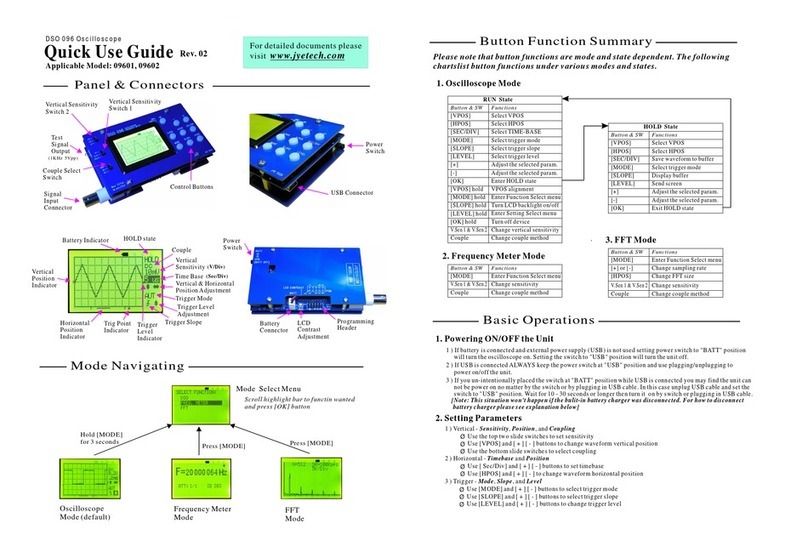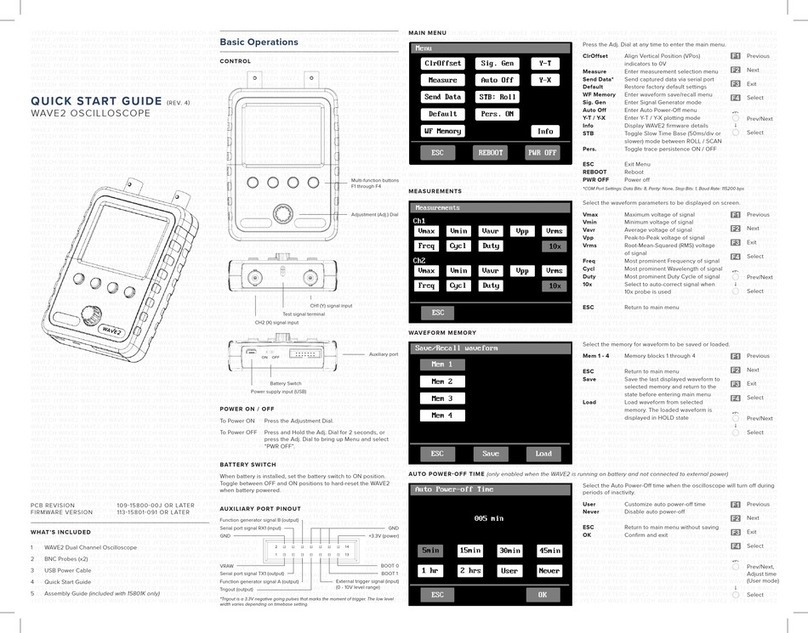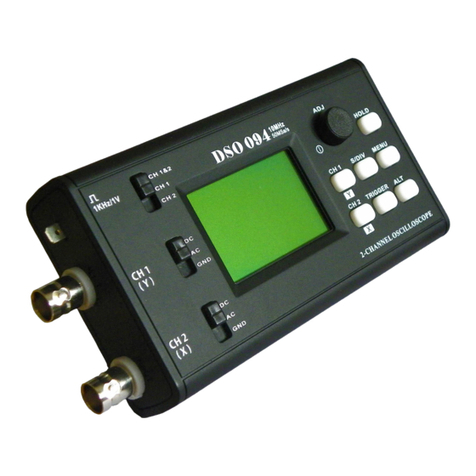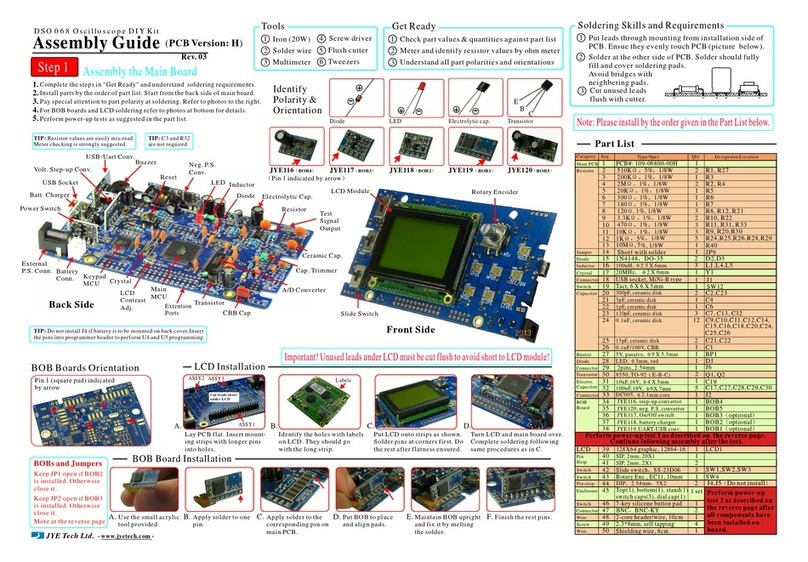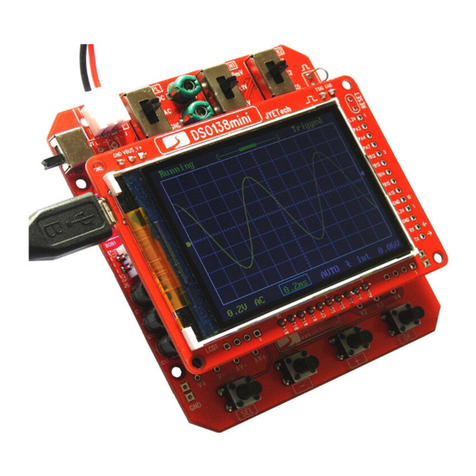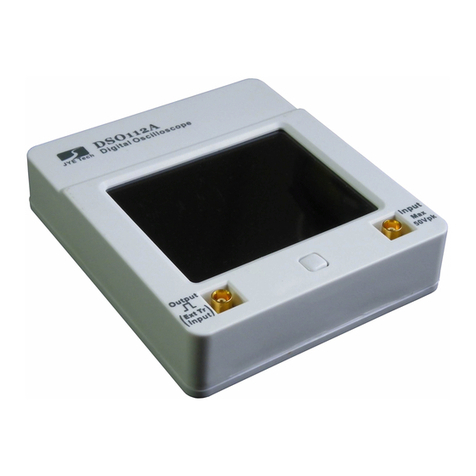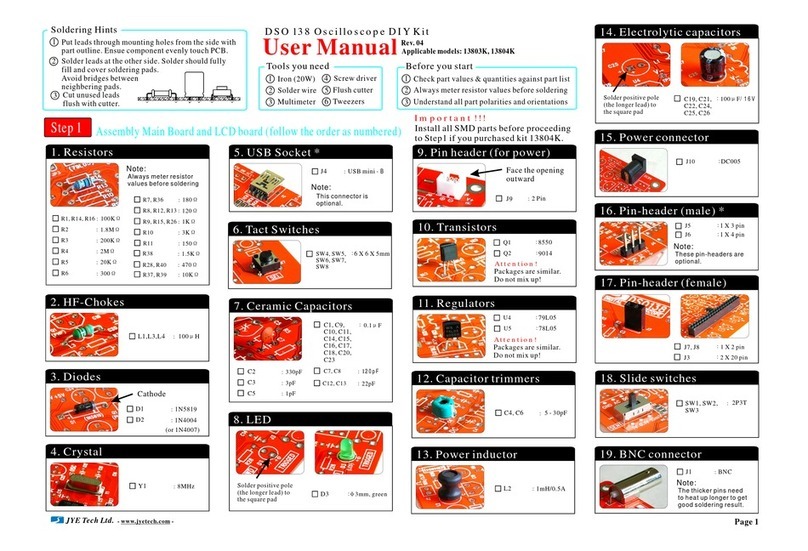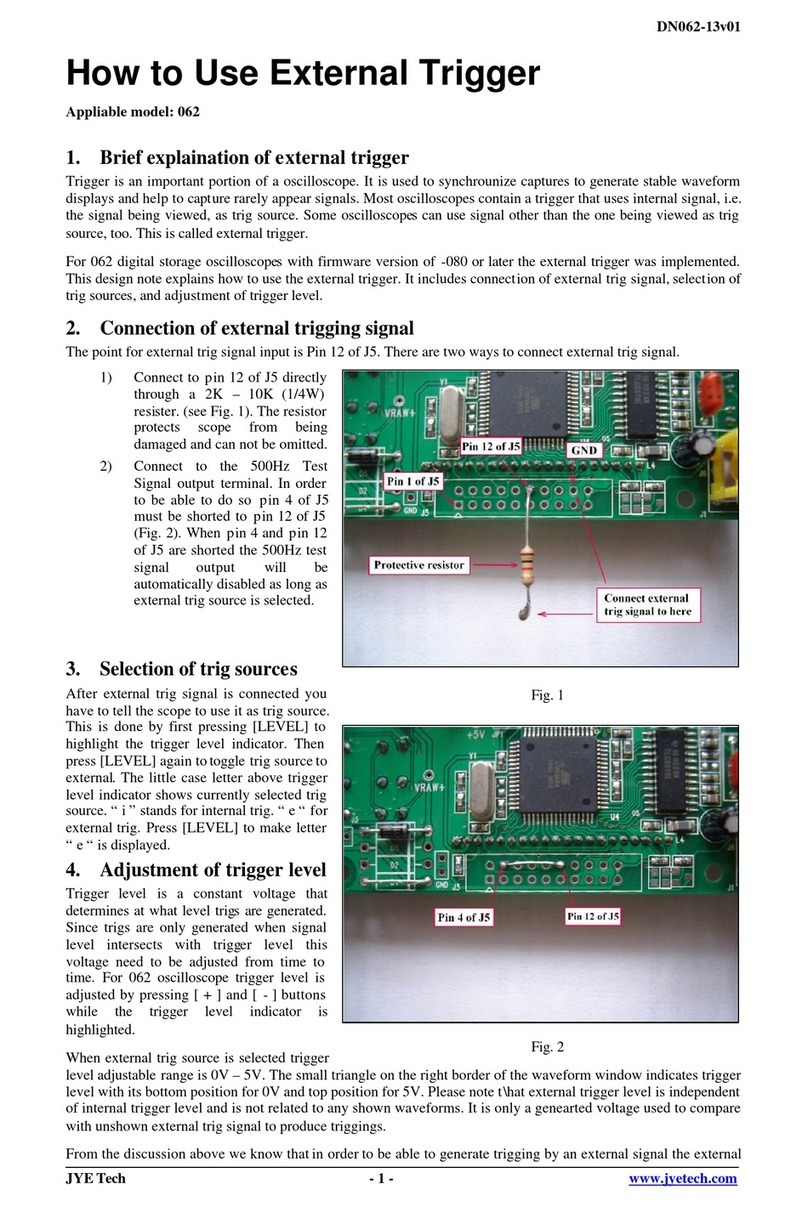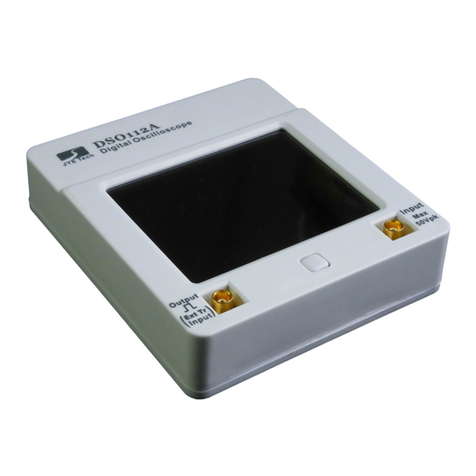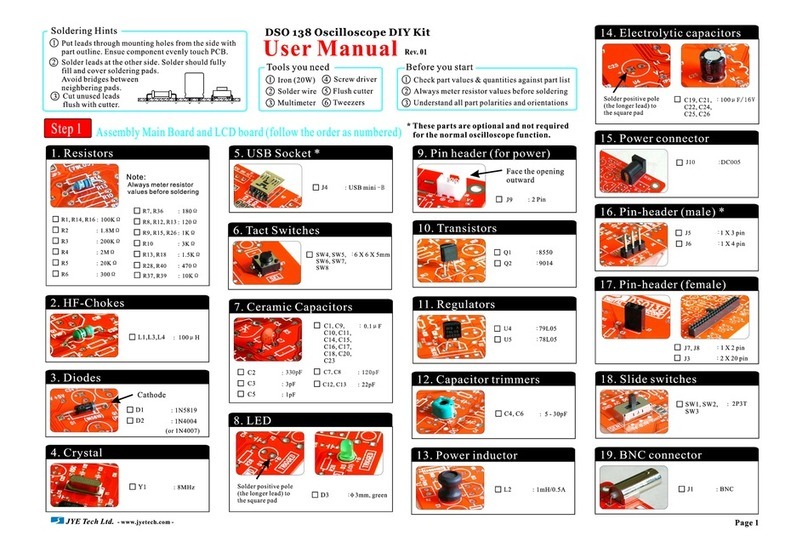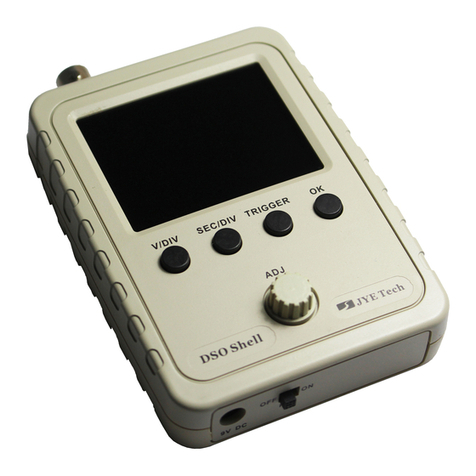DN062-18v03
JYE Tech - 3 - www.jyetech.com
First mount heat sink (it is threaded) to PCB with provided M3 x10mm pan head
screw.Bend the leads of U3 properlyso that the leads go through the three soldering
holes and the hole at the tab fit the pan head screw.Tight U3 with the M3 nut firmly.
Solder its three leads at the other side.
Step 9. Check +5Vpowersupply
Now we have finished all through-hole part installation on the component side
(oscilloscope back side). Before proceeding tothe rest installation we shouldpower
the board and check if there are anymajor errors. You need a9 –12VDC power
supply.Please note thatthe center conductor of its plug shouldbe positive. Plug it
into J2 and measure voltage at TP5 with amulti-meter.The multi-metershould +5V
+/- 0.2V.If it is far from this value something is wrong. Please check D3, C11, C10,
and U3 soldering.
If voltage at TP5 tested ok then continue.
Step 10. Connect JP1
JP1 serves as asafeguard. It separates power supplyfrom the rest circuits to avoid
abnormal power supplyburns everything. Now that power supply is tested good JP1
can be hard connected with apiece of wire. After connecting JP1 check voltage at
TP5 again. There shouldbe not much difference from itsprevious value. If you find
it changed significantly that indicates something is wrong with the restcircuits. You
need to find out the causes before proceeding.
If the voltage at TP5 staysat +5Vthen you can continue toinstall components at the
front side of board
Step 11. Install tact switches
It is important to installall tact switches upright and evenlysit on PCB. Otherwise
you will have trouble in putting up the front panel later. We stronglyrecommend that
for each switch onlysolder two across pins the first time. Then check and if you find
switch position is uneven adjust it bytouching the soldered legs with an iron while
push it by hand on the other side. After you satisfy yourself with that all switches are
located properlysolder all the rest legs.
You need tobe alittle cautious when soldering SW11and SW12 since two of the
legs are prettyclose to C11. Tryto avoid damaging the coat of C11.
Step 12. Install slide switches
Again you need to make sure the three slide switches are soldered upright and sit
evenlyto avoid troublein front panel installing. After inserting switch into PCB
solder onlytwo pins first. Then check and adjust until no uneven is seen. Solder all
the rest pins.
Step 13. Install LCD module
First solder the long SIPpins (the 20x pin strip) to LCD module. Look at the LCD
module. You will see same number holes at two sides. Look for the holes with labels.
These are where the long SIPpins should go. [Do not solderit on theside without
labels!] Insert the shorter ends of the long SIPpins intoLCD modulefrom the side
opposite to the glass and solder its two end pins first. By only soldering two end pins
it will allow you have chance tocheck and adjust. The SIPpins need tobe installed
perpendicular to the LCDboard. Otherwise it will not fit the main board. After you
are sure of perpendicularityis guaranteed you can solder all the rest pins.
After the long SIPpins have been done follow the same wayto install the two short
SIPpins (2x pin strips). These two SIPpins are to be installed at the opposite ends of
other side. These pins are for holding the LCDmodule to the main board onlyand
are not part of the circuit. Again, theymust be perpendicular to the LCD board so
that the LCD can fit into the main board.
Important Note: Cut all C10 and U3 leads flash to PCB to avoid short to LCD
module.
Now place the assembled LCD module into the main board. Solder the four corner
pins first. Check to make sure the LCD assembly is fully inserted into the main board.
